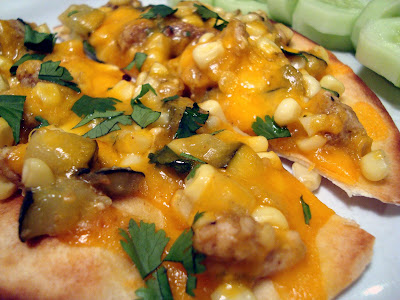Here is a fantastically delicious salad based on one seen in a recent Southern Living magazine. This BLT salad has all the components of the beloved sandwich minus the bread. The dressing is mayonaise based but is garlicky and tangy balancing the smoky bacon and sweet tomatoes.
And speaking of hot canning days, here is a reminder that Roasted Salsa Verde is a great way to use those tomatillos you find at the farmer's market this time of year. I posted about it last year, and the recipe I use has not changed. The salsa has an excellent smoky quality and can be eaten with chips or used in Chicken and Vegetable Tostadas or Chicken and Corn Enchiladas Verdes (both of which are delicious and can be found under the Cooking tab at the top of this page).
Here are the tomatillos I found at the market this year. Lori, one of the owner's of Rock Bottom Farm in Shelby, NC was so nice she added in all the extra ripe ones for free giving me enough to make a little extra salsa verde.
This is picture of a jar made last year. Click on the link above for more salsa verde pictures and the recipe.
BLT Salad- serves 4
6 thick-cut bacon slices
1 garlic clove, finely minced
1/2 cup mayonaise
2 Tbsp fresh lemon juice
1/2 tsp kosher salt
1/4 tsp freshly ground black pepper
1-2 Tbsp water
1 pint cherry tomatoes, halved
5 oz arugula and spinach mix (or use arugula only)
In a skillet on medium heat, cook bacon slices until crisp. Drain the slices on a towel lined plate. Once cool enough to handle, break the slices into bits.
In a small bowl, combine the mayonaise, garlic, salt, pepper, and lemon juice. Add one to two tablespoons water until the dressing is thin enough to drizzle over the salad.
Arrange the arugula mix on a platter. Arrange the halved tomatoes on top. Sprinkle the crumbled bacon over the salad. Drizzle several tablespoons of the dressing over the salad and serve the extra in a bowl alongside.




















